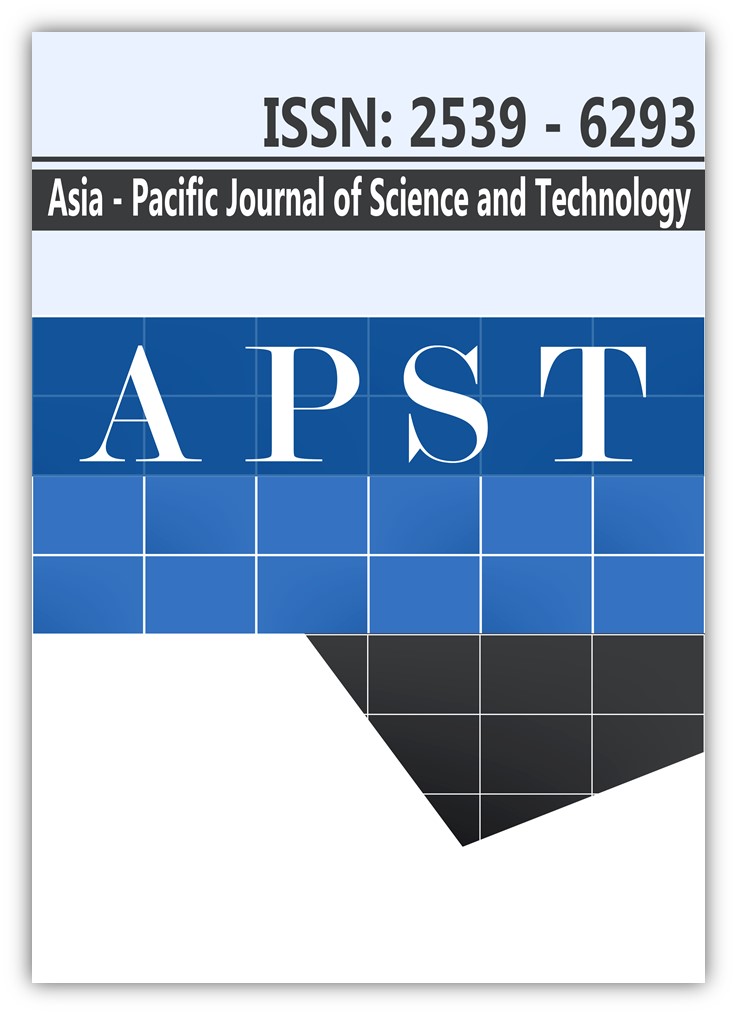Modelling of osmotic dehydration of kedondong fruit (Spondias dulcis) immersed in natural pineapple juice
Main Article Content
Abstract
Kedondong (Spondias dulcis) is a type of underutilized fruits in Malaysia which are rich in nutrients such as vitamin C, carotenoids and vitamin A. Osmotic dehydration is a type of preservation technique by transforming fruit in dehydrated form to avoid further deterioration. In this research, kedondong were dehydrated by immersing the fruit pieces in natural pineapple juice at 25 ̊C, 50 ̊C and 70 ̊C. Results showed that moisture loss and solute gain within the samples increased with temperatures due to increasing permeability of fruit membranes and reducing viscosity of the osmotic agent. Results from mathematical modelling showed that Page and Two-term models predicted well the dehydration kinetics within the temperature range 25 ̊C – 70 ̊C. Effective moisture diffusivities were estimated in the order of magnitude 1.58 10-10-1.84 10-10 m2/s within temperature range of 25 ̊C-70 ̊C.
Article Details
References
[2] Uddin MB, Ainsworth P, İbanoğlu Ş. Evaluation of mass exchange during osmotic dehydration of carrots using response surface methodology. J Food Eng. 2004;65(4):473-477.
[3] Yadav AK, Singh SV. Osmotic dehydration of fruits and vegetables: A review. J Food Sci Technol. 2014;51 (9):1654-1673.
[4] Dans A, Ng N, Varghese C, Tai ES, Firestone R, Bonita R. The rise of chronic non-communicable diseases in Southeast Asia: Time for action. Lancet. 2011;377(9766):680-689.
[5] Ishak SA, Ismail N, Noor MAM, Ahmad H. Some physical and chemical properties of ambarella (Spondias cytherea Sonn.) at three different stages of maturity. J Food Compos Anal. 2005;18(8):819-827.
[6] Konopacka D, Jesionkowska K, Klewicki R, Bonazzi C. The effect of different osmotic agents on the sensory perception of osmo-treated dried fruit. J Hortic Sci Biotechnol. 2009;84(6):80-84.
[7] Chambi HNM, Lima WCV, Schmidt FL. Osmotic dehydration of yellow melon using red grape juice concentrate. Food Sci Technol. 2016;36:468-475.
[8] Yaacob MD. Effects of osmotic dehydration on kedondong (Spondias dulcis) immersed in natural fruit juices [dissertation]. University of Nottingham Malaysia; 2017.
[9] Helrich K. Official Methods of Analysis of the Association of Official Analytical Chemisty. Arlington: USA; 1990.
[10] Lenart A, Flink JM. Osmotic concentration of potato. Int J Food Sci Technol. 1984;19(1):45-63.
[11] Hii CL, Law CL, Cloke M. Modeling using a new thin layer drying model and product quality of cocoa. J Food Eng. 2009;90(2):191-198.
[12] Phahom T, Phoungchandang S. Drying characteristics and quality attributes of Thunbergia laurifolia leaves using microwave drying. Asia-Pacific J Sci Technol. 2018;23(1):1-12.
[13] Klungboonkrong V, Phoungchandang S. Microwave drying characteristics and qualities of dried orthosiphon aristatus leaves. Asia-Pacific J Sci Technol. 2018;23(1):1-12.
[14] Crank J. The mathematics of diffusion. 2 nd ed. Oxford university press; 1979.
[15] Potisate Y, Phoungchandang S. Microwave drying of Moringa oleifera (Lam.) leaves: drying characteristics and quality aspects. Asia-Pacific J Sci Technol. 2015;20(1):12-25.
[16] Moreira R, Chenlo F, Torres MD, Vázquez G. Effect of stirring in the osmotic dehydration of chestnut using glycerol solutions. LWT - Food Sci Technol. 2007;40(9):1507-1514.
[17] García-Toledo JA, Ruiz-López II, Martínez-Sánchez CE, Rodríguez-Miranda J, Carmona-García R, Torruco-Uco JG, et al. Effect of osmotic dehydration on the physical and chemical properties of Mexican ginger (Zingiber officinale var. Grand Cayman). CyTA - J Food. 2016;14(1):27-34.
[18] Zogzas NP, Maroulis ZB, Marinos-Kouris D. Moisture Diffusivity Data Compilation in Foodstuffs. Dry Technol. 1996;14(10):2225–2253.
[19] Singh C, Sharma HK, Sarkar BC. Kinetics of mass transfer during convective dehydration of coated osmosed pineapple samples. J. Food Process Eng. 2009;34:1879-1902.


